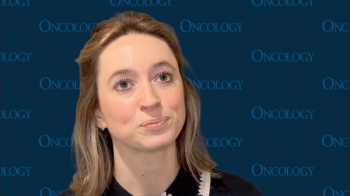
Older AML Patients Survive Longer With New Chemotherapy Delivery Method
Older patients with AML survive longer after receiving an allogeneic stem cell transplant if they are initially treated with CPX-351 liposome injection instead of the standard “7+3” chemotherapy with cytarabine and daunorubicin.
SAN DIEGO-Older patients with acute myeloid leukemia (AML) survive longer after receiving an allogeneic stem cell transplant if they are initially treated with CPX-351 liposome injection instead of the standard “7+3” chemotherapy with cytarabine and daunorubicin, according to a study (
High-risk AML patients currently have limited treatment options and poor survival rates.
CPXâ351 may provide a bridge to successful transplant in a poorârisk subgroup of AML patients, said lead author Jeffrey E. Lancet, MD, of the Moffitt Cancer Center in Tampa, Florida, at a press briefing. “Some 20% or less of these patients goes on to transplant. We hope that more successful therapy and less toxicity will allow more patients to get to allotransplant,” he said.
The active ingredients of CPX-351 are the same as those in the 7+3 regimen, which delivers cytarabine and daunorubicin separately, except CPX-351 encapsulates the drugs into a single delivery vehicle in a fixed synergistic molar ratio. “The two drugs delivered together to the cell in the proper synergistic ratio enhances cell-killing ability,” said Lancet.
He presented data from a subgroup analysis of a large phase III randomized controlled trial completed earlier this year that found CPX-351 nearly doubled overall survival compared to the 7+3 regimen. The researchers examined survival and other health outcomes among trial participants who received chemotherapy and then allogeneic hematopoietic cell transplantation (alloHCT).
Of 309 trial participants, 153 patients were randomized to the CPX-351 arm and 156 patients to the 7+3 arm. Patients in either arm responding to induction with either a complete response or a complete response with incomplete platelet or neutrophil recovery were considered for alloHCT when possible.
A total of 91 patients received alloHCT, including 52 patients who received CPX-351 and 39 patients who received 7+3. More CPX-351–treated patients (75%) underwent transplantation while in remission than 7+3 patients (62%).
The study met the primary endpoint, with an overall survival rate that was greater in the CPX-351 arm (9.56 months) compared to the 7+3 arm (5.95 months). A landmark analysis showed median overall survival was not reached with CPX-351 versus 10.5 months with 7+3. Lancet noted that a higher percentage of CPX-351 patients were in complete remission at transplantation.
Early mortality by day 100 after transplantation was lower in the CPX-351 arm (9.6%) than in the 7+3 arm (20.5%).
In conclusion, Lancet said: “Outcomes after allogeneic transplant in older patients with highârisk AML appear superior in patients treated with CPXâ351, including 53% fewer deaths within 100 days of transplant.” He noted that the results should be interpreted with caution since this is an exploratory analysis of a nonârandomized subgroup.
Lancet predicted that “this drug will receive an indication in this high-risk subtype of secondary AML patients. It will also likely be developed in younger patients with adverse karyotypes or high-risk profiles.” From 30% to 40% of secondary AML patients have high-risk features, he said.
Newsletter
Stay up to date on recent advances in the multidisciplinary approach to cancer.



















































































